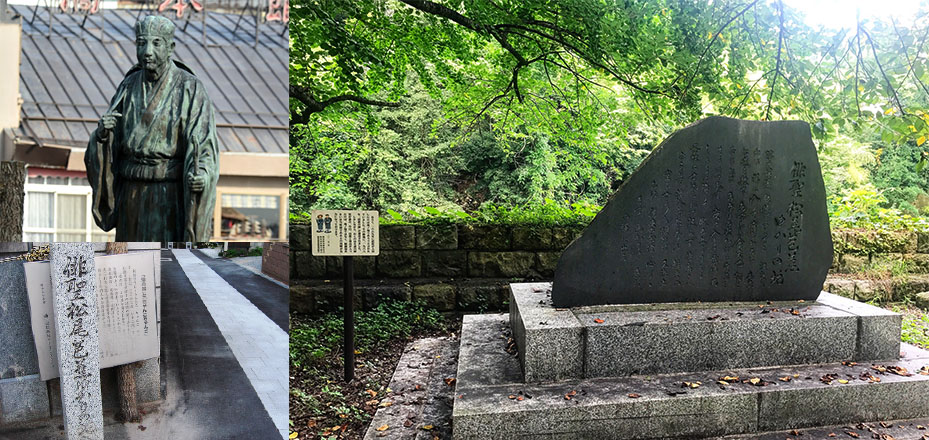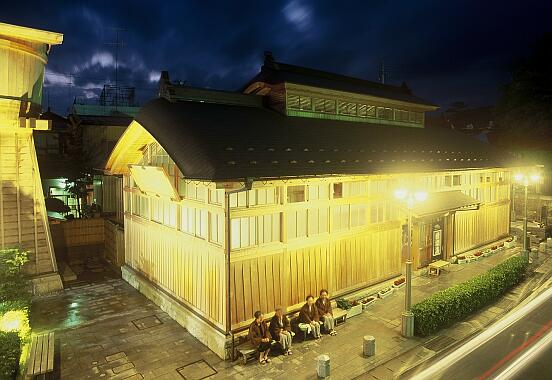Discover Iizaka Onsen, a hidden Hot Spring Destination
Iizaka Onsen is one of the most famous hot spring towns in the Tohoku region, known historically as "Sabako no Yu." Along with Naruko and Akiu, it is one of the three major hot springs of Oshu. Its history dates back to the 2nd century when it is said that Yamato Takeru visited during his eastern expedition. The renowned haiku poet Matsuo Basho also stopped by Iizaka Onsen in 1689 during his journey along the Narrow Road to the Deep North. Located just 20 minutes by car from Fukushima City and easily accessible via the Tohoku Shinkansen, Iizaka Onsen offers a convenient escape to relaxation and rejuvenation.
Iizaka Onsen is a destination rich in history, culture, and natural beauty. From its ancient hot springs to seasonal fruit-picking and unique local activities, Iizaka Onsen offers a relaxing and immersive experience for all visitors. Whether you're soaking in a communal bath, exploring historical sites, or engaging in local crafts, a visit to Iizaka Onsen promises an unforgettable journey into the heart of Japan's hot spring culture.
Hot Springs and Footbaths
Iizaka Onsen features numerous hot spring inns along the Surikami River and its tributary, Akagawa. Visitors can enjoy both overnight stays and day-trip bathing plans. The town boasts nine communal baths and four footbaths, where locals and visitors alike can mingle.
- Sabako-no-Yu: The oldest hot spring in Iizaka, visited by Matsuo Basho. It has been rebuilt with a cypress-scented bath.
- Kiri-no-Yu: Known for its healing properties for cuts, this bath has a long history dating back to 1624.
- Douzen-no-Yu: A communal bath established in 1962, named after the local area.
- Hobai-no-Yu: Rebuilt in 2011 with a traditional Japanese design, it features both hot and lukewarm baths.

Historical Significance
Iizaka Onsen's history reaches back to the Jomon period. By the 2nd century, it was known for its healing properties. It gained widespread recognition during the Edo period when the roads were improved, bringing in travelers. Matsuo Basho’s mention of Iizaka Onsen in his travel writings helped increase its popularity. The area is rich in historical landmarks, including ancient tombs and shrines connected to notable figures like Yamato Takeru and Matsuo Basho.
History of Iizaka Onsen
Iizaka Onsen's history stretches back to the Jomon period. Around 3000 BC, Jomon people lived near the intersection of the Ogawa River and Iizaka Highway, specifically in the Tsukizaki area. By the 2nd century, Yamato Takeru is believed to have bathed in "Sabako no Yu" and miraculously recovered from an illness during his eastern expedition. This hot spring was also mentioned in the Shūi Wakashū, where it was poetically referred to as "Sabako," solidifying its historical name.
The hot spring became well-known during the mid-Edo period, especially from the Kyōhō era, when improved roadways increased the number of visitors. Matsuo Basho, in his travel writings, mentioned Iizaka as "Iizuka," further enhancing its recognition. However, Basho's stay was not luxurious, as he lodged in a humble thatched-roof inn. At that time, Iizaka had four hot spring inns, 326 residents, and 74 households, forming a small hot spring town where visitors used scattered public baths for healing.
The name Iizaka derives from the Iizaka village, cultivated by a branch of the Date family, which took the surname Iizaka. This village later became known as Iizaka Onsen. Notable poets and writers like Masaoka Shiki and Yosano Akiko also visited, and their commemorative monuments remain. Helen Keller stayed in Iizaka twice, beginning in 1937, and even the Showa Emperor and other imperial family members have visited the onsen.
The legend of Tota Bath adds to the rich history of Iizaka Onsen. Tota, originally Fujiwara no Hidesato from the 10th century, discovered a hot spring while defeating a giant centipede terrorizing the local dragon princess. This bath was later called Tota Bath. Over the centuries, several other hot springs like Sabako no Yu emerged, each with unique stories and healing properties.
In 1125, the Sato family established Tota Bath as their private hot spring, renaming it Tozayu. Although it dried up in 1189, new springs emerged over time, including one in 1578 due to river course changes and another in 1804 after a flood. The present Sabako no Yu, rebuilt in 1992, inherits the legacy of these historical springs.
Iizaka Onsen remains a significant cultural and historical site, offering various public baths and foot baths, with rich stories that date back thousands of years.
Sightseeing and Activities
- Fruit Line: A nearby area with numerous orchards offering seasonal fruit-picking experiences, perfect for families and senior travelers.
- Old Horikiri Residence: A historical house from the Edo period with a tea room, hand and foot baths, and event spaces.
- Hanamomo-no-Sato: A scenic area with 40 varieties of peach blossoms blooming from early April to May.
- Iouji Temple: Founded in the Heian period, it is connected to the local Sato clan and the famous warrior Yoshitsune.
- Fukushima Kataoka Tsurutaro Art Garden: Showcases art by the renowned artist and entertainer Kataoka Tsurutaro.

Unique Local Experiences
- Bamboo Lantern Making: An activity originating from the "Yoshitsune Summit" where participants can create and decorate bamboo lanterns.
- Moniwa Lake Natural Experience: At the Surikami Dam, visitors can enjoy camping, canoeing, and the beautiful natural scenery.
Getting There
To get to Iizaka Onsen in Fukushima from major urban areas such as Tokyo, Sendai, and Fukushima City by public transportation, you can follow these steps.
From Tokyo:
- By Shinkansen and Local Train:
- Take the JR Tohoku Shinkansen from Tokyo Station to Fukushima Station. The journey takes approximately 1.5 to 2 hours.
- At Fukushima Station, transfer to the Fukushima Kotsu Iizaka Line and take a local train to Iizaka Onsen Station. This leg of the journey takes about 25 minutes.
From Sendai:
- By Shinkansen and Local Train:
- Take the JR Tohoku Shinkansen from Sendai Station to Fukushima Station. The journey takes about 30 to 40 minutes.
- From Fukushima Station, transfer to the Fukushima Kotsu Iizaka Line and take a local train to Iizaka Onsen Station, which takes about 25 minutes.
From Fukushima City:
- By Local Train:
- From Fukushima Station, take the Fukushima Kotsu Iizaka Line directly to Iizaka Onsen Station. This journey takes approximately 25 minutes.
Additional Tips:
- The Fukushima Kotsu Iizaka Line operates frequently, making it convenient to travel to Iizaka Onsen from Fukushima Station.
- Be sure to check train schedules in advance, especially if traveling in the evening or on weekends, as services may be less frequent during these times.
These routes offer convenient access to Iizaka Onsen, allowing you to enjoy the hot springs and attractions of this historic area.
find your next getaway
Kumamoto
2 adults